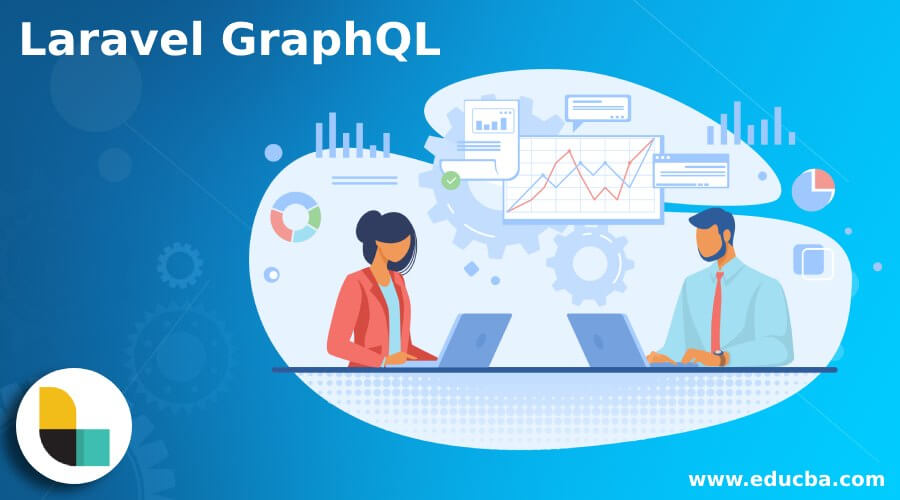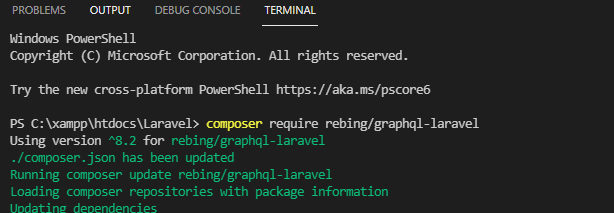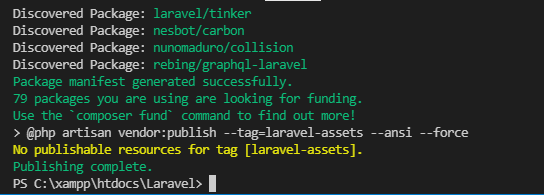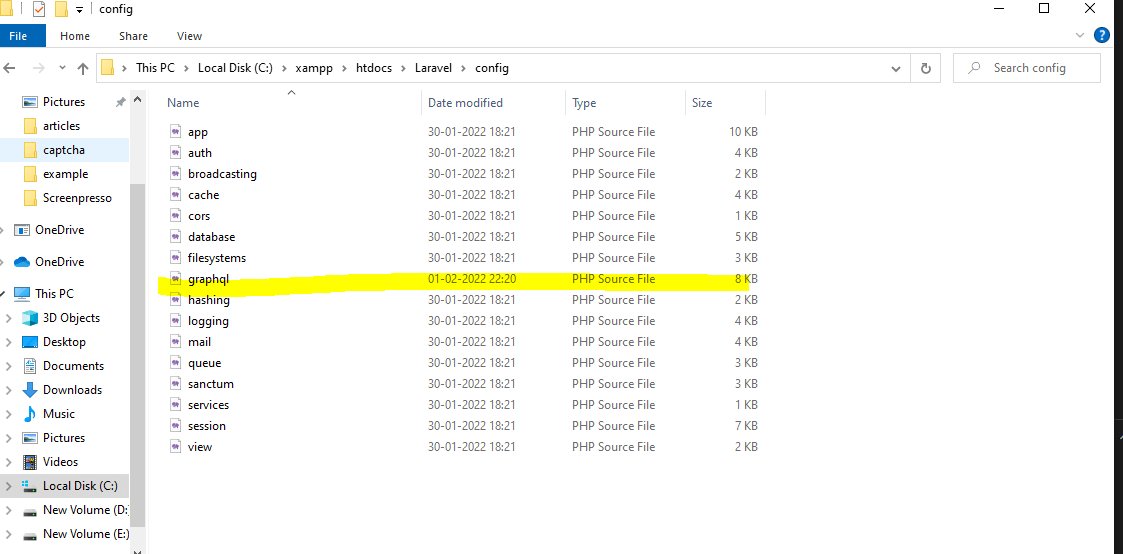Updated February 21, 2023

Introduction to Laravel GraphQL
GraphQL is one of the API query languages that helps to allow the clients to describe the datas exactly what we require from the server. The Laravel and other frameworks like Ember prioritizes, which gives the clients exactly the datas that we will implement. The GraphQL API is used to set up the application in the time interval for exploiting the powerful infrastructure of the projects.
What is laravel graphql?
The Laravel is the most famous PHP-based web framework with strong opinions and user-friendly features. It has n number of built-in tools for developers to implement the application as up and running quickly to build the Laravel interfaces as custom. Although the main communities surrounding the GraphQL and Laravel Frameworks to develop the open-sources releases significantly to combine the other technologies. This GraphQL is developed using the Freelance developers that explain for to create and include the querying relationships with some user modifications and authenticate the datas. GraphQL allows for query nested operations and data-related requests with the relative developers to obtain the exact datas with single round trip servers.
Installation laravel graphql
The php configuration files are configured in the config folder from the vendor folders mapped to the suppliers. Because the standard methods are getting one or more configuration files from the third-party package and customizing application elements’ needs. Then only we will use graphql the API endpoints, which provides the complete description of the client, and the query will be returning the responses. The database schema has the data collections for client requests and the data type which returns the specific resources that will change the client requests, also known as the mutations. To support the GraphQL library mainly to allow the designing schemas and queries for the simple way to support the GraphQL in the application of the greatest libraries for the GraphQL with the help of the below command, we can install the GraphQL on the Laravel project,
composer requires rebing/graphql-laravel
Once the installation is completed, we need to extract the GraphQL libraries from the specific project folder,
php artisan vendor:publish –provider=”Rebing\GraphQL\GraphQLServiceProvider.”
This command will help to copy the config.php file to graphql.php and publish it on the web.
After installation and configuration, we can see the graphql.php file in the Laravel\config folder.
How to use laravel GraphQL?
Generally, GraphQL provides the required datas with a query written for similar languages that can be accessed via a database. GraphQL is one of the powerful, highly sophisticated APIs with a user interface to assist us with writing queries with autocomplete feature. So, when we type a query, it shows the simplest query written; the concept of the GraphQL looks similar to the Rest API, but they run outside of the business logic layers.
The workflow is similar to the REST and other features like RPC. Still, all of them are needed on the Authorization with business logic layers to validate the data, which has to be retrieved. All the datas added to the GraphQL server and declared the type to make the query. As an output result, we will create any datas that can be created using the GraphQL directory with the app directory folders. We can also use Mutations to perform the file operations like reading and writing that can be created mutations that depend on the task status. The mutations also created a separated directory of the app/GraphQL for within the Mutation task will be created using the new task of the mutation to define the parameters args for accepting the mutations. It will on the other scenarios like the query language, which has its standard, and the toolkit for that will be worked in the single HTTP endpoint services. Mainly it enables the client to send the request for the user data information, and it requires more and more datas for validating the server backend. It also allowed to development of the GraphQL API to set the application in the mentioned duration by leveraging the robust infrastructure.
laravel graphql server
The GraphQL API is one of the query languages that makes the server easier by offering the use of specific methods in the querying items. For instance, it will look like the REST API platform, and it will declare the datas to be fetched from the database, which I get a more predictable request and response. So we can interact with the user datas on the simple object for certain fields using specific things and methods. Every time the request data from the GraphQL server gets resolved using some arguments with the specified objects, args, context, and info, these are some specific arguments for calling the work and task with the specified project.
With the help of postman insomnia tools, we can send the Request and Response from the front-end UI.
There is n number of GraphQL servers are used, like Apollo GraphQL Server, Hot Chocolate, Hasura GraphQL Engine, and Parse Server GraphQL API; these are default and most specified servers from the coder end. For each server to have its configurations and built-in setup to host the user data, the GraphQL app engine will be adding the layer of the existing Postgres app, The GraphQL Engines, which offers the built-in feature for filtering the datas with pagination and other merge remote schemas along with the many useful features due to high-performance CPU utilization with the possible rates for the tools API platform like Rest, GraphQL APIs located on the platform like PHP microframeworks, etc.
Conclusion
The Laravel GraphQL is the API that allows for the client request model and the user’s exact datas for querying the APIs. It will be implemented using the Laravel API and the PHP framework that allows setting up the application infrastructure with Ember development.
Recommended Articles
This is a guide to Laravel GraphQL. Here we discuss that Laravel GraphQL is the API that allows for the client request model and the user’s exact datas. You may also look at the following articles to learn more –







